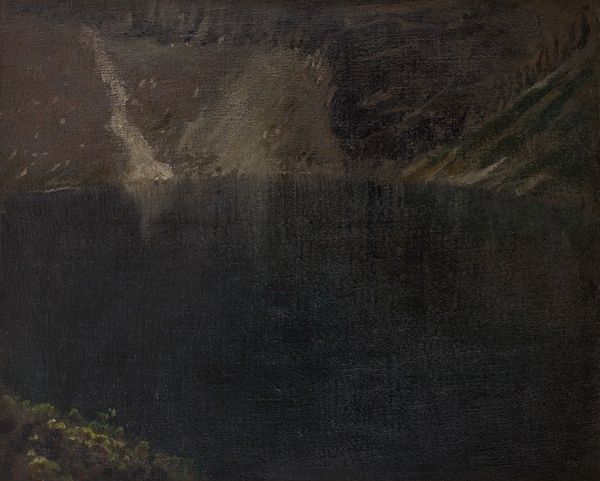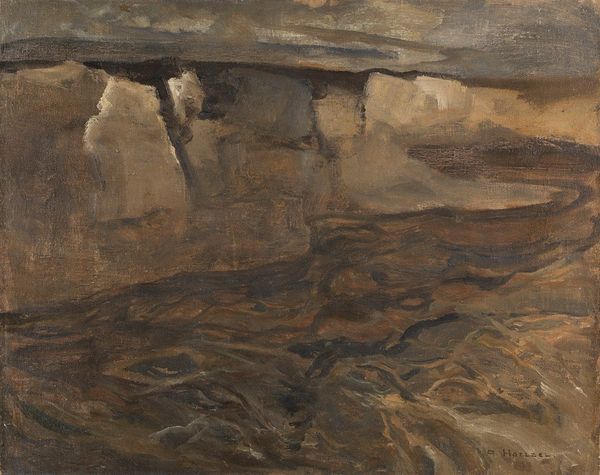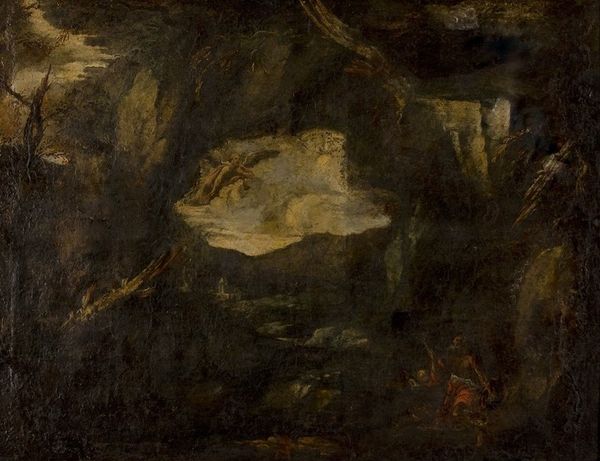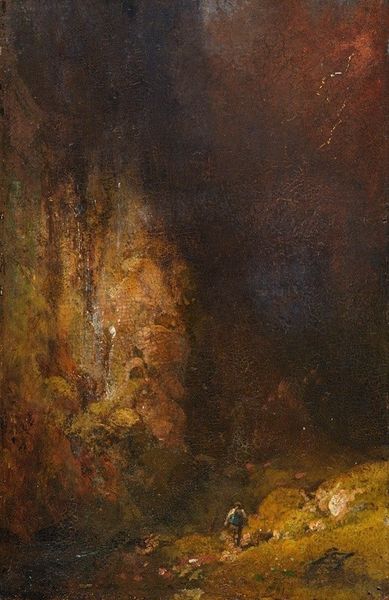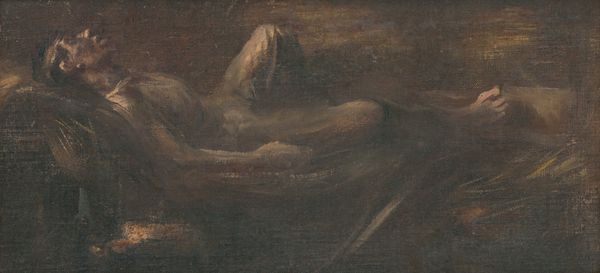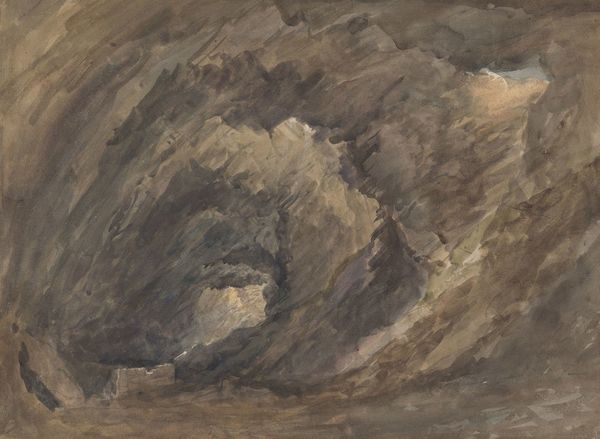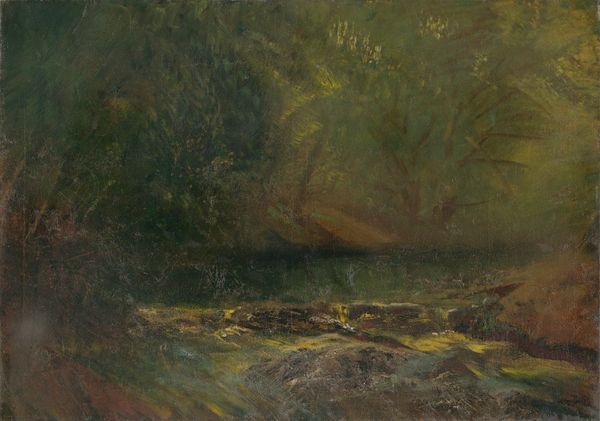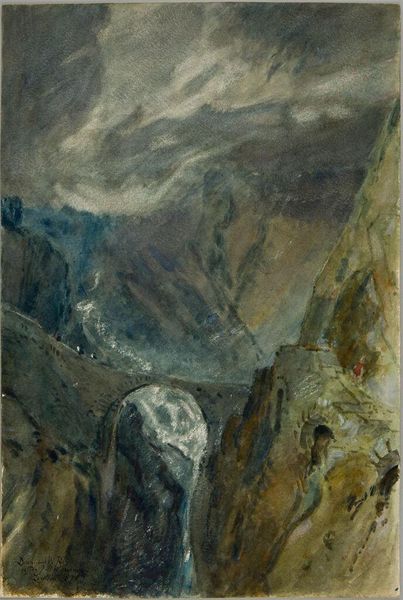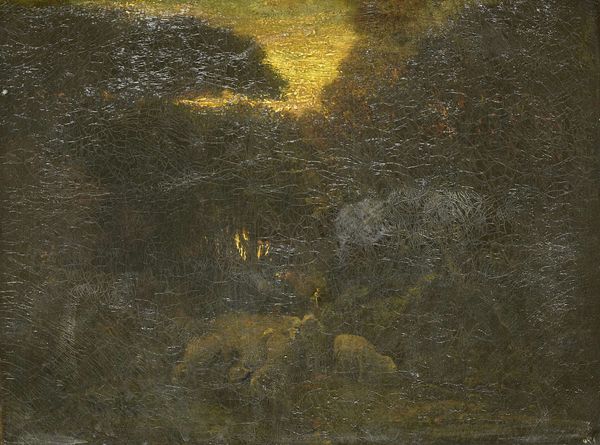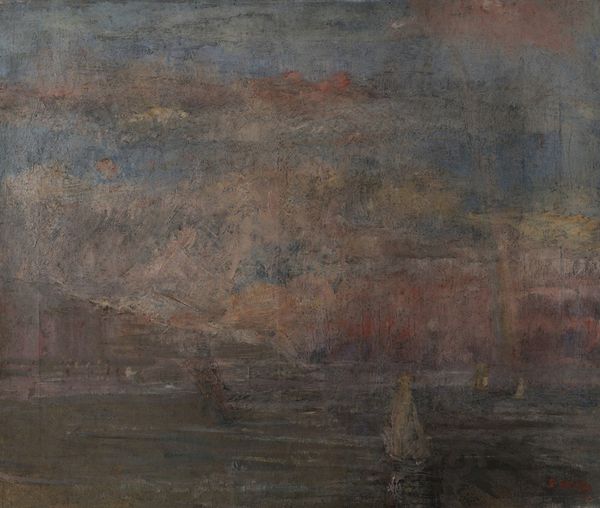
painting, oil-paint, impasto
#
figurative
#
painting
#
oil-paint
#
charcoal drawing
#
figuration
#
oil painting
#
impasto
#
romanticism
#
nude
Copyright: Public Domain: Artvee
Editor: Fantin-Latour's "Apparition," an oil painting, feels shrouded in mystery. The palette is muted, and the figures seem to emerge from a smoky haze. What do you see in this work that I might be missing? Curator: This piece taps into a deep well of Romantic symbolism. Notice how the impasto adds a dreamlike quality. Does the stark contrast between the ethereal nude and the darker, brooding form evoke any specific narratives or feelings for you? Editor: I think there is a sort of duality. The nude figure seems vulnerable and exposed against the dark form, which I interpret as a symbol of threat or perhaps suppressed emotion. Curator: Precisely. Consider the tradition of the "femme fatale" or the allegories of temptation, figures prevalent in Romantic and Symbolist art. How does the lack of definitive detail contribute to its enduring psychological impact? Does it invite us to project our own anxieties or desires? Editor: It really does feel more like a suggestion of a story than a complete one, allowing space for individual interpretation. The lack of clarity in the forms also feels relevant; they are like half-formed ideas. Curator: Yes, it's about the symbolic charge, not literal representation. The image resonates because it's a container for complex feelings regarding love, loss, and perhaps even self-discovery. How do you feel this painting fits within or challenges those art historical traditions? Editor: This conversation has reshaped my understanding. It's not just a nude figure; it's a manifestation of inner turmoil, a cultural echo resonating through art history. Curator: Indeed. Every brushstroke is loaded with cultural memory. The piece allows us to dive deep into the symbolism of romanticism and the exploration of these inner, complex, psychological spaces.
Comments
No comments
Be the first to comment and join the conversation on the ultimate creative platform.


